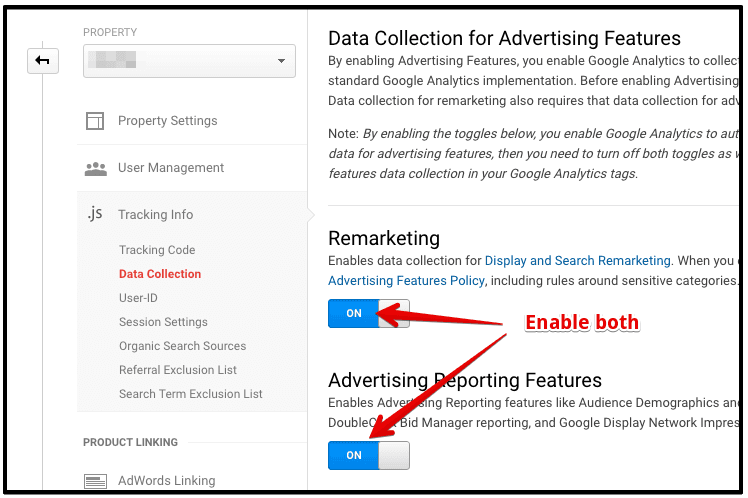Optimize Your ROI With Remarketing in Google Analytics
By taking advantage of the power of customer information and customizing ads to specific target market sections, companies can dramatically amplify their conversion rates. The journey to maximizing ROI with remarketing is a nuanced course led with insights and possibilities that can improve the trajectory of your marketing undertakings.
Comprehending Remarketing in Google Analytics
Recognizing remarketing in Google Analytics is crucial for enhancing your electronic advertising and marketing approach. Remarketing enables you to target users who have actually formerly seen your web site or connected with your application, providing them with customized ads as they surf various other websites or make use of various other applications within the Google Display Network. This approach aids keep your brand top of mind and encourages users to return to your website, eventually raising the possibility of conversion.
By making use of Google Analytics, you can track the efficiency of your remarketing campaigns, gaining important understandings into individual habits, engagement, and conversions. This data enables you to fine-tune your bidding process, targeting, and messaging methods to improve the overall effectiveness of your campaigns.
Furthermore, understanding the various sorts of remarketing checklists offered in Google Analytics, such as standard, vibrant, and comparable audiences, enables you to produce personalized and highly segmented campaigns customized to specific user segments. This level of granularity can considerably boost the importance and influence of your remarketing initiatives, ultimately maximizing your return on investment.
Establishing Remarketing Listings
To properly carry out remarketing projects in Google Analytics, the first action involves creating and configuring remarketing lists targeting details user sections based on their communications with your web site or application. By establishing remarketing checklists, you can tailor your advertising efforts to reach customers who have already shown interest in your service or products.
To start, browse to the Admin area of your Google Analytics account and choose the Property where you wish to produce the remarketing list. Then, under the Home column, click on 'Audience Definitions' and choose 'Audiences.' Next, click on the red 'New Target market' switch and select 'Develop New' to define the parameters for your remarketing listing.

Crafting Efficient Remarketing Ads

When crafting your advertisements, concentrate on creating attention-grabbing headings and compelling visuals that stand out to possible customers. Incorporate strong calls-to-action that encourage users to review your site and finish a desired activity. Make use of vibrant remarketing to reveal customized advertisements including items or solutions that users have actually previously seen on your site.
Furthermore, ensure that your advertisements are mobile-friendly considering that a significant section of internet website traffic comes from mobile phones. Test various advertisement variants to determine which layouts and messages drive the ideal outcomes. By constantly refining and enhancing your remarketing ads based on performance data, you can maximize their efficiency and improve your return on investment.
Studying Remarketing Efficiency
Via Google Analytics, marketing professionals can track the performance of their remarketing projects in real-time, allowing them to identify patterns, patterns, and locations for renovation promptly. By analyzing the data, online marketers can identify which ads are carrying out well, which audience segments are responding positively, and which channels are driving the most conversions. This degree of granularity enables marketing experts to make data-driven decisions to enhance their remarketing advocate better outcomes.
Enhancing ROI With Remarketing
Evaluating remarketing data in Google Analytics enables marketers to determine chances for optimizing return on financial investment (ROI) through strategic changes - What Is “Remarketing” In Google Analytics?. To make best use of ROI with remarketing, it is essential to understand the actions of your audience. By assessing user communications, such as the web pages they saw, the products they watched, or the actions they took on your site, you can tailor your remarketing projects more effectively
Segmenting your target market based on their habits permits you to create personalized and targeted advertisements that are most likely to resonate with them. By revealing appropriate advertisements to certain sectors of your audience, you can click this enhance the chances of conversion and inevitably improve your ROI.
Additionally, evaluating different advertisement creatives, messaging, and offers can help identify what resonates ideal with your target market. A/B screening enables you to experiment with different aspects of your ads to determine what drives the highest involvement and conversion rates.
Conclusion
To conclude, making the most of ROI with remarketing in Google Analytics needs a critical approach to evaluating customer actions, segmenting target markets, creating customized ads, and optimizing project performance. By leveraging data-driven understandings and evaluating various strategies, services can enhance their remarketing initiatives to drive greater involvement and conversion prices. This organized approach makes sure that sources are efficiently assigned towards taking full advantage of rois in remarketing projects.
Next, click on the red 'New Audience' switch and select 'Create New' to specify the criteria for your remarketing listing.
By continuously refining and optimizing your remarketing advertisements based on performance data, you can maximize their efficiency and enhance your return on investment.
By diving right into these understandings, marketing experts can obtain a detailed understanding of exactly how their remarketing efforts are resonating with their target audience and driving conversions. To take full advantage of ROI with remarketing, it is essential to comprehend the habits of your target market.In conclusion, maximizing ROI with remarketing in Google Analytics needs a strategic method to evaluating individual habits, segmenting audiences, producing tailored advertisements, and optimizing project performance.